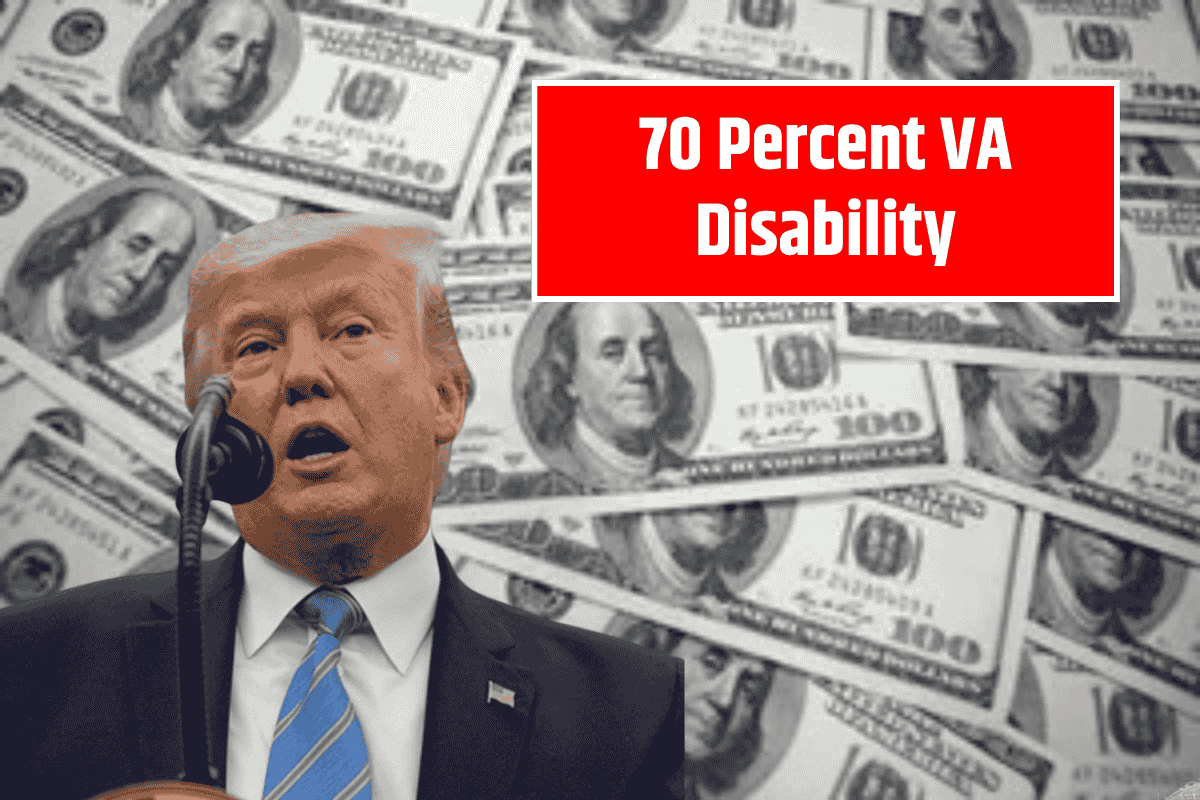In 2025, U.S. military veterans with a 70% VA disability rating, along with a spouse and one parent, can receive $2,028.19 each month from the VA. This amount is tax-free and includes a 2.5% cost-of-living increase (COLA) that started in December 2024 to keep up with rising living costs.
The VA’s disability benefits provide financial support to veterans who have been injured during their service. The amount of support depends on the severity of the injury and whether the veteran has dependents.
Monthly VA Disability Payments for 2025
The amount of monthly VA benefits a veteran receives depends on their disability rating and family situation. Here’s a breakdown of the 2025 payments for a veteran with a 70% disability rating:
A solo veteran with a 70% disability rating will receive $1,759.19 per month.
With just a spouse, the monthly payment rises to $1,908.19.
With a spouse and one parent, the monthly payment increases to $2,028.19.
With a spouse and two parents, the monthly payment goes up to $2,148.19.
These payments are not taxed, which makes them an important financial support for veterans.
What Does a 70% Disability Rating Mean?
A 70% disability rating is given to veterans who experience significant complications in daily life or work due to physical or health conditions connected to their military service.
These conditions can affect the veteran’s ability to function normally and often require ongoing medical treatment. Common conditions associated with a 70% disability rating include:
Post-Traumatic Stress Disorder (PTSD)
Major depressive disorder
Traumatic Brain Injury (TBI)
Severe orthopedic or neurological conditions
Veterans with this rating usually face chronic symptoms and may experience limitations in their social and professional lives due to their conditions.
Additional Benefits for Veterans with a 70% Disability Rating
In addition to financial support, veterans with a 70% disability rating can access various other benefits, including:
VA Healthcare Group 1: This provides free healthcare and medications.
Vocational Rehabilitation and Employment (VR&E): This program offers career advice, educational support, and job placement assistance.
Lower Property Tax: Many states offer property tax reductions for disabled veterans.
Discounted Goods and Services: Veterans can access lower prices for daily necessities.
Job Preference: Veterans with a disability rating receive priority for certain government jobs.
Understanding TDIU (Total Disability Based on Individual Unemployability)
Veterans with a 70% disability rating may be eligible for TDIU (Total Disability Based on Individual Unemployability). This program increases the monthly payment to $3,831.30 for a solo veteran in 2025.
TDIU is available to veterans who are unable to work full-time due to their service-connected injuries, even if their combined disability rating is not 100%.
To qualify for TDIU, a veteran must provide evidence showing that their injuries prevent them from holding a full-time job. Veterans can apply for TDIU or request a higher rating by visiting the VA website or working with a Veterans Service Organization (VSO).
If a veteran’s condition worsens, or if their rating is too low, they can apply for a review or file a new claim to increase their rating.
A 70% VA disability rating offers significant financial and health support, especially for veterans with families. In 2025, a veteran with a spouse and one parent will receive $2,028.19 per month, which can greatly help with long-term financial challenges.
Additional programs like TDIU, healthcare, and job preferences ensure that veterans at this level get the care and support they deserve. Understanding these benefits can help veterans and their families navigate life after service more easily.
